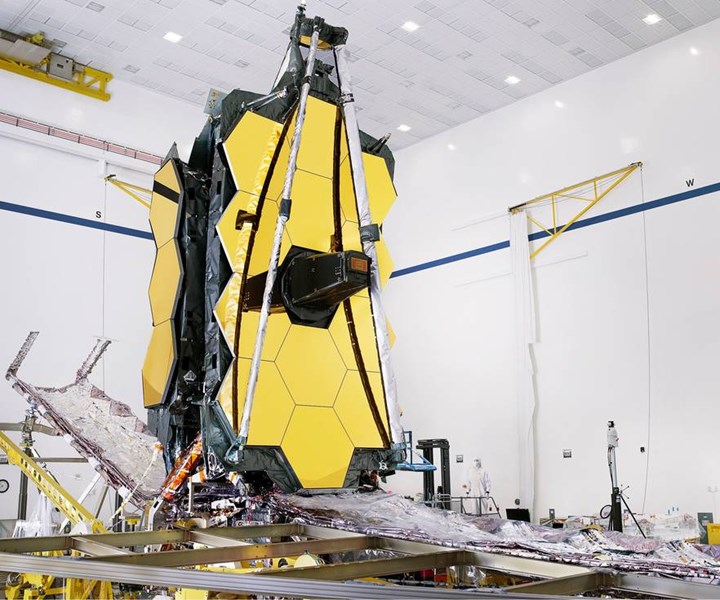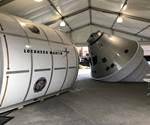NASA assembles James Webb Telescope
NASA has successfully connected the two halves — the Optical Telescope Element (OTE) and the Space Craft Element (SCE) — of the composites intensive James Webb Telescope for the first time, marking a major milestone for the program.

The fully assembled James Webb Space Telescope with its sunshield and unitized pallet structures (UPSs) that fold up around the telescope for launch, are seen partially deployed to an open configuration to enable telescope installation. Source | NASA
NASA (Washington, D.C., U.S.) reported on August 28 that engineers at Northrop Grumman’s facilities in in Redondo Beach, Calif., U.S. have successfully mechanically connected the James Webb Space Telescope’s (Webb) Optical Telescope Element (OTE), which includes mirror and science instruments, and the Space Craft Element (SCE), which combines Webb’s sunshield and spacecraft.
Although both components of the telescope have been tested individually, this marks the first time the two halves have been combined into a single observatory. Next steps will be to electrically connect the halves, and then test the electrical connections. As a fully assembled observatory, Webb will undergo additional environmental and deployment testing, including deployment of the telescope’s intricate five-layer sunshield, which is critical for mission success.
“The assembly of the telescope and its scientific instruments, sunshield and the spacecraft into one observatory represents an incredible achievement by the entire Webb team,” says Bill Ochs, Webb project manager for NASA Goddard Space Flight Center in Greenbelt, Md., U.S. “This milestone symbolizes the efforts of thousands of dedicated individuals for over more than 20 years across NASA, the European Space Agency, the Canadian Space Agency, Northrop Grumman, and the rest of our industrial and academic partners.”
“This is an exciting time to now see all Webb’s parts finally joined together into a single observatory for the very first time,” adds Gregory Robinson, the Webb program director at NASA Headquarters in Washington, D.C. “The engineering team has accomplished a huge step forward and soon we will be able to see incredible new views of our amazing universe.”
The James Webb Telescope is NASA's most powerful and complex space telescope and is designed explore the cosmos using infrared light. Webb employs a carbon fiber backplane to support the telescope’s mirrors, instruments and other elements. The SCE, or bus, is also constructed of carbon fiber composites and houses the spacecraft’s propulsion, electrical power and communications. The telescope is scheduled to launch in 2021.
Related Content
-
PEEK vs. PEKK vs. PAEK and continuous compression molding
Suppliers of thermoplastics and carbon fiber chime in regarding PEEK vs. PEKK, and now PAEK, as well as in-situ consolidation — the supply chain for thermoplastic tape composites continues to evolve.
-
Materials & Processes: Fabrication methods
There are numerous methods for fabricating composite components. Selection of a method for a particular part, therefore, will depend on the materials, the part design and end-use or application. Here's a guide to selection.
-
Infinite Composites: Type V tanks for space, hydrogen, automotive and more
After a decade of proving its linerless, weight-saving composite tanks with NASA and more than 30 aerospace companies, this CryoSphere pioneer is scaling for growth in commercial space and sustainable transportation on Earth.

.png;width=70;height=70;mode=crop)














